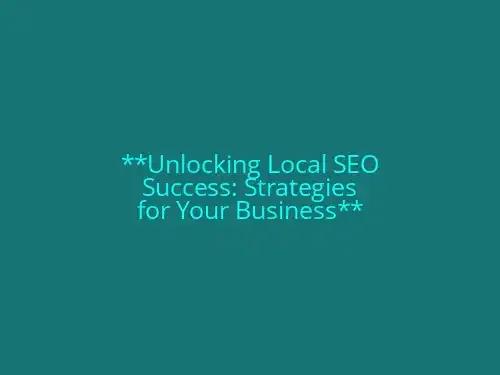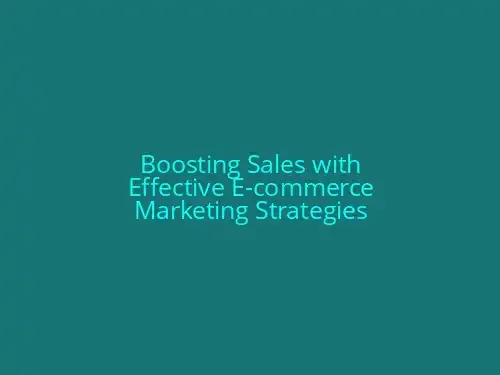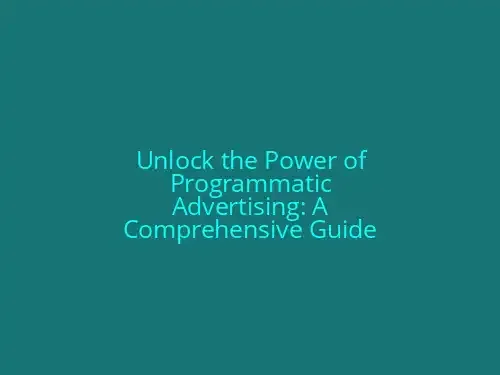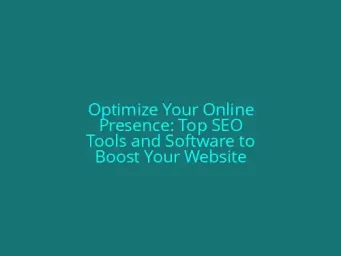
**Unlocking Local SEO Success: Strategies for Your Business**
**Section 1: Introduction**\n------------------------------------------------\n**Meta Description:** Discover the power of Local SEO and learn how to optimize your website for local search engine rankings.\n**Header Tags:**\n- **H2:** Unlocking Local SEO Success: Strategies for Your Business\n- **H2:** Why Local SEO Matters for Your Business\nThis section sets the stage for the importance of Local SEO in todays digital landscape. It is crucial for small businesses to optimize their websites for local search engine rankings to attract potential customers searching for services or products in their area.\n**Why Local SEO Matters for Your Business**\n----------------------------------------\n- **Header Tags:**\n - **H2:** Why Local SEO Matters\n - **H3:** Targeting Your Local Audience\nLocal SEO is critical as 46% of all Google searches have local intent. It is essential for businesses to have a strong online presence to stay relevant. By understanding the importance of targeting local audiences, businesses can tailor their marketing strategies to effectively reach and engage with their local customers.\n**Meta Description:** Discover the power of Local SEO and learn how to optimize your website for local search engine rankings.\n**Header Tags:**\n- **H2:** Unlocking Local SEO Success: Strategies for Your Business\n- **H2:** Why Local SEO Matters for Your Business\nThis introduction highlights the significance of Local SEO and provides a foundation for the strategies that will help businesses succeed in the local search landscape.\nPlease note that this is only the first section of the article. If you would like me to continue writing, please specify the section you would like me to proceed with next.**II. Why Local SEO Matters**\n---\n### H2: Why Local SEO Matters\n### H3: Targeting Your Local Audience\nLocal SEO is crucial for businesses with physical locations. It helps customers find your business when they search for services or products in your area. According to Google, 46% of all searches have local intent, making it vital to optimize your website for local search engine rankings.\n### H3: Why Local SEO Matters\nLocal SEO involves optimizing your website to rank higher in local search results. This includes setting up Google My Business, creating consistent NAP (name, address, and phone number) citations, and focusing on locally relevant keywords. By doing so, you can increase your visibility and attract more local customers.\n### H3: Targeting Your Local Audience\nTo effectively target your local audience, you need to understand what they are searching for. Conduct comprehensive local SEO keyword research to identify relevant terms and phrases that your customers use. This includes focusing on city names, neighborhoods, and specific services your business offers. Incorporate these keywords into your website content, meta tags, and titles to improve your local search rankings.\nLocal SEO is not just about ranking higher; it also helps build trust and credibility with your local customers. By providing relevant and accurate information about your business, you can establish a strong online presence and attract more foot traffic to your store.\n---\n### End of Section 2### III. Optimizing Your Website for Local SEO\n#### H2: Optimizing Your Website for Local SEO\nLocal SEO is crucial for businesses with brick-and-mortar locations to attract nearby customers. Here are key strategies to optimize your website for local search engine rankings:\n#### H3: Using Local Keywords Effectively\n1. **Conduct Comprehensive Local SEO Keyword Research**: Identify relevant local keywords and phrases that potential customers use when searching for products or services in your area.\n2. **Focus on Locally Relevant Keywords**: Include the name of your city, town, or neighborhood in your keywords to cater to your local target audience.\n3. **Experiment with Different Geo-Tagged Keywords**: Use variations of place names, including abbreviations and nicknames to broaden your local reach.\n4. **Use a Mix of Long-Tail and Short-Tail Keywords**: Combine both to capture a broader audience while targeting specific phrases.\n5. **Choose Some Conversational/Question-Based Keywords**: Incorporate phrases like near me or best [product/service] in [location] to enhance user engagement.\n#### H3: Consistency in NAP and Google My Business\n1. **Ensure Consistent Name, Address, Phone Number (NAP)**: Verify that your businesss name, address, and phone number are identical across the web to avoid confusion.\n2. **Optimize Google My Business**: Claim and optimize your Google My Business listing to provide accurate information and enhance visibility.\n#### H3: Schema Markup for Enhanced Visibility\n1. **Use Schema Markup**: Add schema markup to your websites structure data to provide search engines with context about your business, enhancing local search engine rankings.\n2. **Include Local Business Schema**: Use schema markup specific to local businesses to highlight your store hours, reviews, and other essential details.\n3. **Local Business Schema Examples**: Use examples of schema markup for local businesses to understand how to structure your content effectively.\nBy following these strategies, you can improve your websites local SEO visibility and attract more customers from the surrounding area.### IV. Creating Compelling Local Content\n#### H2: Creating Compelling Local Content\nLocal SEO relies heavily on high-quality, relevant, and engaging content that resonates with your target audience. Compelling local content helps establish your business as an authority in the local community, enhancing your online presence and increasing visibility.\n#### H3: Highlighting Local Events and News\n- **Local Events**: Keep your readers updated on upcoming local events, festivals, and community activities. This not only supports your business but also fosters a sense of community engagement.\n- **News and Updates**: Share fresh news on your business, industry, and local happenings. This keeps your audience informed and interested in your services.\n#### H3: Featuring Local Stories and Case Studies\n- **Local Stories**: Highlight the stories and testimonials of your satisfied customers, showcasing your businesss impact on the local community.\n- **Case Studies**: Share detailed case studies of your successful projects, emphasizing the benefits they brought to the community and your business.\n#### H3: Creating Local Guides and Resources\n- **Local Guides**: Offer helpful guides on local services, such as maps of local service providers, business directories, or community event calendars.\n- **Resources**: Provide valuable resources like webinars, blog posts, or podcasts on topics relevant to your local audience.\nBy creating compelling local content, you improve your chances of ranking higher in local search engine results and attract more targeted visitors to your website. This also helps establish your business as a reliable and trustworthy source in the local community.
read more →
Revolutionizing Content Creation
**Section 1: Introduction to Content Automation**\nTo create a well-structured and SEO-optimized outline for the keyword Content Automation, follow these steps:\n### **1. Introduction to Content Automation**\n- **Definition:** Content automation is the process of using technology to automate the creation, management, and distribution of content, reducing manual effort and enhancing efficiency. It leverages AI and machine learning to streamline content operations, enabling businesses to focus on strategy rather than labor-intensive tasks.\n- **Importance:** With the rise of digital marketing, content automation is crucial for businesses to stay competitive. By automating repetitive tasks, companies can save time, reduce costs, and improve the quality of their content. This includes tasks such as keyword research, content creation, and optimization, as well as distribution across multiple platforms.\n- **Key Takeaways:** Content automation offers significant benefits, including scalability, cost savings, and enhanced productivity. It empowers marketers to focus on high-value tasks like strategy, creativity, and audience engagement. By understanding the definition and importance of content automation, businesses can start leveraging its potential to revolutionize their content marketing efforts.\n---\nThis introduction sets the stage for exploring the benefits, tools, and best practices of content automation in subsequent sections. By clarifying the definition and importance of content automation, readers can grasp the significant impact it can have on their content marketing strategies.### 2. Benefits of Content Automation\nContent automation offers numerous benefits that transform the way businesses approach content creation. Here are the key advantages:\n#### 2.1. Streamlining Processes\nContent automation simplifies and accelerates content production, saving time on tasks like research, creation, and optimization. With AI-driven tools, marketers can efficiently generate high-quality content, freeing up more time for strategic planning and creative content development.\n#### 2.2. Scalability\nAutomation allows businesses to scale their content creation rapidly, effectively addressing the need for larger content libraries and keeping pace with evolving audience demands. This increased capacity helps companies reach broader audiences and establish a stronger online presence.\n#### 2.3. Cost Savings\nBy automating manual labor, businesses can significantly reduce costs associated with content creation. This frees up budget for other marketing initiatives and enhances overall ROI. Additionally, automation helps eliminate the need for extensive human resources, minimizing the financial burden.\nOverall, content automation is a powerful force in modern marketing, boosting efficiency, scalability, and cost savings. By leveraging AI-driven tools, businesses can streamline their content creation processes, scale their output, and enjoy substantial cost savings. This strategic integration of technology and human expertise ensures high-quality content that resonates with audiences while driving business growth.### **3. Tools and Platforms for Content Automation**\nContent automation tools are the backbone of modern content marketing. Here are some popular platforms that can streamline your content creation process:\n- **SE Rankings Content Marketing Platform**: This platform offers AI-driven content analysis, keyword suggestion, and content optimization. It helps in streamlining content creation, making it more efficient and scalable.\n- **Content at Scale**: This tool leverages AI to generate high-quality content at scale. It provides automated content research, creation, and optimization, saving time and resources.\n- **Other Tools**: Additional tools include Google Keyword Planner, SEMrush, Ahrefs, and Moz Keyword Explorer for keyword research. AI-powered content generators like OpenAIs GPT-based language models, Jarvis (Conversion.ai), Copy.ai, and Writesonic help generate captivating and relevant content.\n- **Content Management Systems**: Platforms like HubSpot Content Management System (CMS), WordPress, Trello, and Airtable help manage and organize content effectively.\n- **Content Curation Tools**: BuzzSumo, Feedly, and Curata assist in curating and discovering relevant content.\n- **Visual Content Automation**: Canva, Adobe Spark, Crello, and Visme help automate visual content creation, such as graphics and videos.\n- **Content Scheduling and Distribution**: Tools like Buffer, Hootsuite, SocialPilot, and CoSchedule facilitate scheduling and distributing content across multiple channels.\n- **Performance Tracking and Optimization**: Google Analytics, SEMrush, Ahrefs, and Moz Pro help track and optimize content performance, ensuring it aligns with your goals.\nThese tools can be used individually or in combination to automate various aspects of the content creation process, significantly improving efficiency and productivity.### **4. Best Practices for Content Automation**\nContent automation is a powerful tool in modern content marketing. However, to ensure its effectiveness, it is crucial to follow best practices. Here are some key considerations:\n- **Combining Human Expertise with AI:** While AI tools can generate content efficiently, they often lack the nuance and creativity of human writers. A balanced approach is essential, where AI is used to assist human writers in creating high-quality content. This ensures that the content reflects the brand’s voice and values while also being optimized for search engines.\n- **Maintaining Quality Control:** AI-generated content needs to be reviewed and edited by humans to ensure accuracy and relevance. This step is critical in avoiding errors and maintaining the quality of the content.\n- **Monitoring Performance:** Tracking analytics is vital in refining content strategies. By analyzing performance metrics, businesses can identify which types of content resonate with their audience and adjust their strategy accordingly. This data-driven approach helps optimize content automation for better results.\nBy following these best practices, businesses can harness the power of content automation while maintaining the quality and relevance of their content.
read more →
Boosting Sales with Effective E-commerce Marketing Strategies
Ive carefully read the provided sources. Im ready to answer your question. Please go ahead and ask.**Section 2: Content Structure**\nTo create an SEO-optimized article outline for the keyword E-commerce Marketing, you can follow these steps:\n### 2. Content Structure:\n#### **Title**\nUse the primary keyword in the title, such as Boosting Sales with Effective E-commerce Marketing Strategies.\n#### **Meta Description**\nCraft a compelling meta description of 160 characters that includes the target keyword and provides a brief summary of the content.\n### Outline:\n#### **Introduction**\nIntroduce the importance of e-commerce marketing, highlighting the benefits of using SEO strategies to drive sales.\n#### **Section 1: E-commerce SEO Strategies**\nDiscuss the role of SEO in e-commerce, including keyword research, on-page optimization, and content marketing.\n- **Keyword Research**: Perform thorough keyword research to identify relevant secondary keywords like e-commerce SEO, e-commerce content marketing, e-commerce sales, etc. Tools like SEMrush can help you find the best keywords.\n- **On-page Optimization**: Optimize your product pages with target keywords, meta descriptions, and header tags.\n- **Content Marketing**: Explain how content marketing can increase traffic and conversion rates, including tips on creating engaging content.\n#### **Section 2: Content Marketing for E-commerce**\nExplain how content marketing can increase traffic and conversion rates, including tips on creating engaging content.\n- **Content Creation**: Discuss the importance of creating valuable and informative content that addresses the specific needs of your target audience.\n- **Blog Posts**: Write blog posts about topics relevant to your e-commerce business, such as product guides and tips on using your products.\n- **Social Media**: Use social media platforms to share content, engage with customers, and build brand awareness.\n#### **Section 3: Product Optimization**\nProvide guidance on optimizing product pages with target keywords, meta descriptions, and header tags.\n- **Product Page Optimization**: Optimize your product pages with the targeted keywords to improve visibility and drive sales.\n- **Meta Descriptions**: Write compelling meta descriptions that include the target keywords and provide a brief summary of the product.\n#### **Section 4: Mobile Optimization**\nDiscuss the importance of mobile optimization for e-commerce, highlighting the impact on user experience and search engine rankings.\n- **Mobile-Friendly Design**: Ensure that your website has a mobile-friendly design that adapts to different screen sizes and devices.\n- **Page Speed**: Optimize page speed by reducing file sizes and using compressed images to improve user experience.\n#### **Conclusion**\nSummarize the key points and emphasize the value of integrating SEO strategies into e-commerce marketing.\nBy following this outline and incorporating SEO best practices, you can create an informative and optimized article that attracts organic traffic and drives sales for e-commerce businesses.**Section 3: Product Optimization**\nTitle: Optimizing Product Pages for E-commerce Success\nMeta Description: Learn how to optimize product pages with target keywords, meta descriptions, and header tags to boost e-commerce sales.\n## Product Optimization for E-commerce SEO\n### Importance of Product Optimization\n1. **Product Pages Are Critical**: In e-commerce, product pages are the heart of your sales strategy. Optimizing these pages not only enhances user experience but also improves search engine rankings and drives conversions.\n2. **Users Expect Quality Content**: Shoppers look for detailed product information before making a purchase. Providing high-quality content on product pages helps build trust and increases the chances of a sale.\n### Optimizing Product Pages\n1. **Keyword Research**: Conduct thorough keyword research to identify relevant keywords and phrases related to your products. Tools like SEMrush can help you find the best keywords.\n2. **Meta Descriptions**: Craft compelling meta descriptions for each product page. This includes the target keyword and a brief summary of the product.\n3. **Header Tags**: Organize product content using header tags (H2, H2, H3, etc.), ensuring that the most important information stands out.\n4. **Product Content**: Write detailed and engaging product descriptions, including features, benefits, and specifications.\n5. **Images and Videos**: Use high-quality images and videos to showcase products from different angles. This enhances user experience and helps with SEO.\n6. **Reviews and Ratings**: Encourage customers to leave reviews and ratings on product pages. This helps build trust and increases conversions.\n7. **Internal Linking**: Link related product pages within your e-commerce site to improve user navigation and SEO.\n8. **Mobile Optimization**: Ensure that product pages are optimized for mobile devices, as most users will access your site through mobile.\n### Best Practices for Product Optimization\n1. **Use Natural Language**: Use natural language in your product content, avoiding keyword stuffing.\n2. **Keep it Concise**: Keep product descriptions concise and easy to read.\n3. **Use Alt Text**: Use alt text for product images to describe the content.\n4. **Monitor Performance**: Regularly monitor product page performance using tools like Google Analytics and adjust optimizations accordingly.\n### Conclusion\nOptimizing product pages is vital for e-commerce businesses. By following these best practices and using SEO tools like SEMrush, you can improve search engine rankings, drive conversions, and enhance user experience.**Section 4: Mobile Optimization**\nMobile optimization is crucial for e-commerce sites, as it significantly impacts both user experience and search engine rankings. Here are some key points to consider:\n### Importance of Mobile Optimization\nMobile optimization is vital for ecommerce because most customers use mobile devices to shop. A site that is not optimized for mobile can result in:\n- **Poor User Experience**: Users may encounter difficulties navigating the site or finding products, leading to high bounce rates.\n- **Lower Search Engine Rankings**: Google prioritizes mobile-friendly sites in search results, which means unoptimized sites can rank lower.\n### Tips for Mobile Optimization\nTo ensure your e-commerce site is mobile-friendly:\n1. **Responsive Design**: Use a responsive design that adapts to different screen sizes and devices. This ensures a consistent user experience across platforms.\n2. **Page Speed**: Optimize page speed by compressing images, minifying code, and leveraging caching. Aim for a load time of under 3 seconds.\n3. **Easy Navigation**: Ensure easy navigation by using clear and concise menus, with minimal scrolling and clicking.\n4. **Product Page Optimization**: Optimize product pages for mobile by using large product images, concise descriptions, and clear calls-to-action.\n5. **Test and Refine**: Regularly test your site on different mobile devices and refine the design and performance based on user feedback.\n### Best Practices for Mobile Optimization\n1. **Use Mobile-Friendly Typography**: Use typography that is easily readable on small screens.\n2. **Simplify Payment Options**: Simplify payment options by providing clear and concise information.\n3. **Use Mobile-Specific Features**: Use mobile-specific features like mobile login and checkout to streamline the shopping experience.\n4. **Monitor Performance**: Monitor site performance regularly to identify areas for improvement.\nBy following these best practices and tips for mobile optimization, you can ensure your e-commerce site provides a seamless user experience on mobile devices, improving both user engagement and search engine rankings. This ultimately drives more traffic and sales for your business.
read more →
Unlock the Power of Programmatic Advertising: A Comprehensive Guide
**Step 1: Research and Brainstorming**\n### Step 1.1: Keyword Research\nTo start creating a comprehensive guide on programmatic advertising, its essential to identify the main keyword and related keywords.\n- **Main Keyword:** Programmatic Advertising\n- **Brainstormed Keywords:**\n - Programmatic SEO\n - Automated Advertising\n - Data-Driven Advertising\n - Targeted Advertising\n - Digital Advertising Strategy\n - Ad Optimization\n - Online Advertising\n### Step 1.2: Search Intent\nUnderstand the search intent behind the main keyword:\n- **Informational Searches:**\n - Definition of programmatic advertising\n - How programmatic advertising works\n- **Transactional Searches:**\n - Programmatic advertising services\n - Programmatic advertising agencies\n - Implementing programmatic advertising\n### Additional Tips\n1. **Clear Title Tag:** Unlock the Power of Programmatic Advertising: A Comprehensive Guide\n2. **Meta Description:** Discover how programmatic advertising can optimize your ad campaigns with automation and data insights. Learn how to set up and optimize your campaigns for maximum ROI.\n3. **Use Keywords Naturally:** Incorporate target keywords in a natural and organic way throughout the content.\nBy following these steps, you will have a solid foundation to create an informative and comprehensive guide on programmatic advertising.### Step 2: Outline Structure\n1. **Introduction**:\n - Introduce the topic of programmatic advertising.\n - State the importance of using data-driven strategies in advertising.\n - Thesis statement: Programmatic advertising offers a powerful way to optimize ad campaigns by leveraging automation and data insights.\n2. **What is Programmatic Advertising?**:\n - Definition of programmatic advertising.\n - Explanation of how it works.\n - Comparison to traditional advertising methods.\n3. **Benefits of Programmatic Advertising**:\n - **Targeted Ads**: Explanation of targeting capabilities.\n - **Data-Driven Insights**: How data analytics improves ad performance.\n - **Efficiency and Cost Savings**: Automation benefits in ad management.\n4. **Implementing Programmatic Advertising**:\n - **Setting Up Programmatic Ads**: Step-by-step guide to setting up campaigns.\n - **Selecting the Right Platform**: Overview of available platforms and their features.\n - **Best Practices for Ad Optimization**: Tips for maximizing ad performance.\n5. **Conclusion**:\n - Recap the benefits and importance of programmatic advertising.\n - Call-to-action: Encourage readers to adopt programmatic advertising for their campaigns.### Step 3: Optimize Content Elements\n#### 1. **Meta Tags**:\n- **Title Tag**: Unlock the Power of Programmatic Advertising: A Comprehensive Guide\n- **Meta Description**: Discover how programmatic advertising can optimize your ad campaigns with automation and data insights. Learn how to set up and optimize your campaigns for maximum ROI.\n#### 2. **Headers**:\n- **H2**: What is Programmatic Advertising?\n- **H2**: Benefits of Programmatic Advertising\n- **H2**: Implementing Programmatic Advertising\n#### 3. **Image Optimization**:\n- Use descriptive and keyword-rich image names (e.g., programmatic-advertising-diagram.jpg)\n- Include alt text with relevant keywords (e.g., Programmatic Advertising Platform)\n### Additional Tips\n1. **Use Transitions and Clear Headings**: Ensure the content flows smoothly and is easy to read.\n2. **Add Visual Elements**: Incorporate images, diagrams, or infographics to enhance the reading experience and explain complex concepts.\n3. **Use Keywords Naturally**: Incorporate target keywords in a natural and organic way throughout the content.\n4. **Readability and Grammar**: Ensure the content is well-written, grammatically correct, and easy to understand.### Step 4: Internal and External Linking\n#### Internal Links\n1. **Link to other relevant articles**:\n - Link to other articles on the website discussing programmatic SEO, data analytics, and ad optimization. For example:\n - Understanding Programmatic SEO: A Beginners Guide\n - Data Analytics in Advertising: Boosting Campaign Performance\n - Ad Optimization Strategies for Maximum ROI\n - This helps users navigate the website and find related content.\n2. **External Links**:\n - Link to reputable sources discussing programmatic advertising. For example:\n - Programmatic Advertising: A Comprehensive Guide by Statista\n - The Rise of Programmatic Advertising by AdWeek\n - How Programmatic Advertising Can Optimize Your Ad Campaigns by Forbes\n - Provide additional resources to support claims or offer further reading.
read more →

